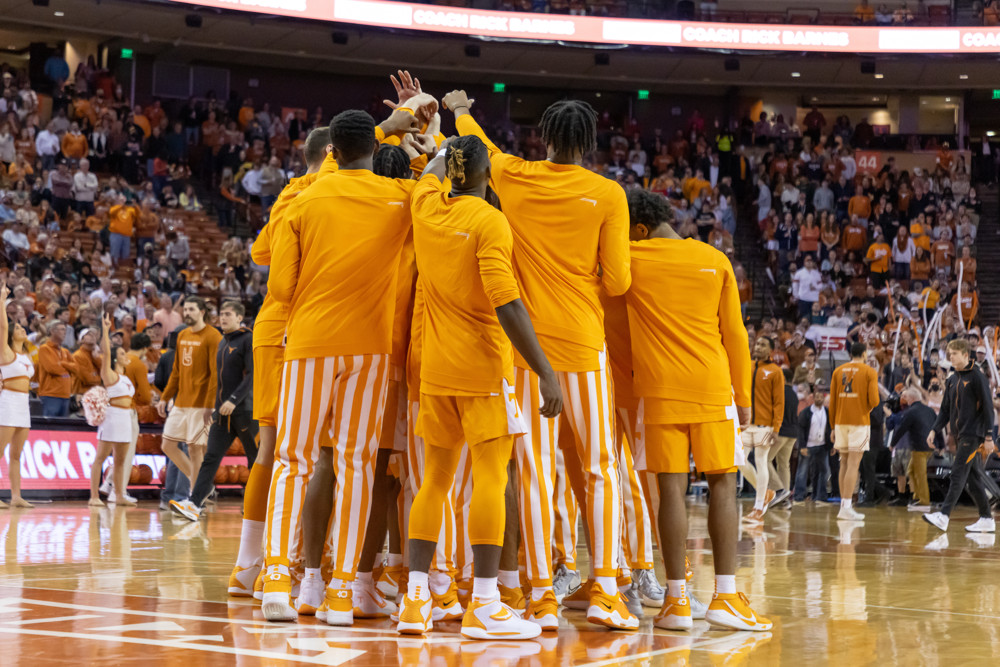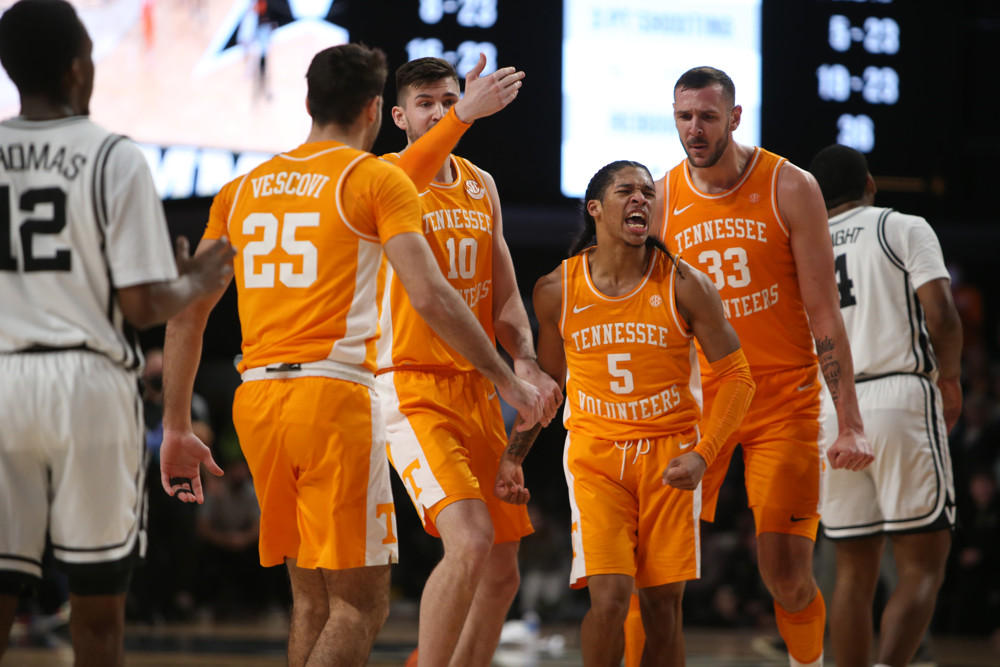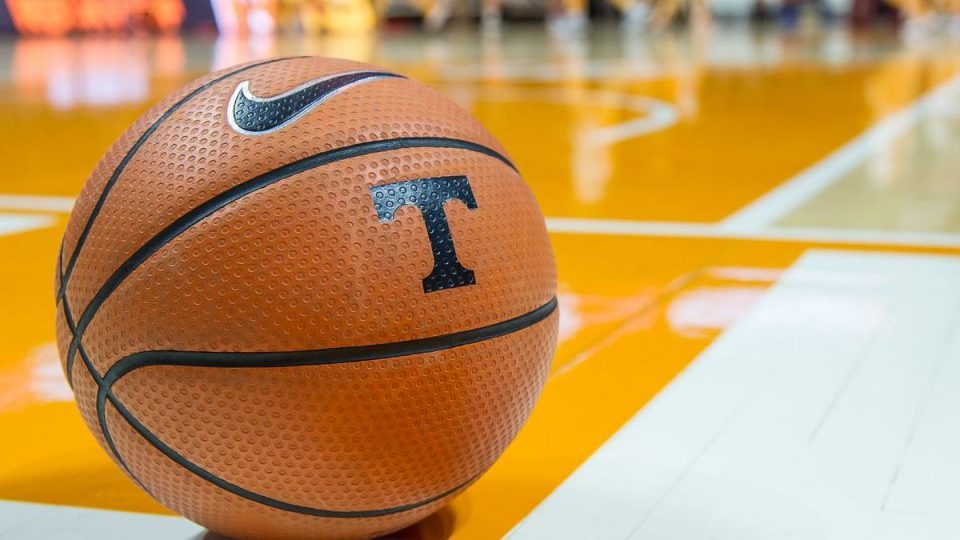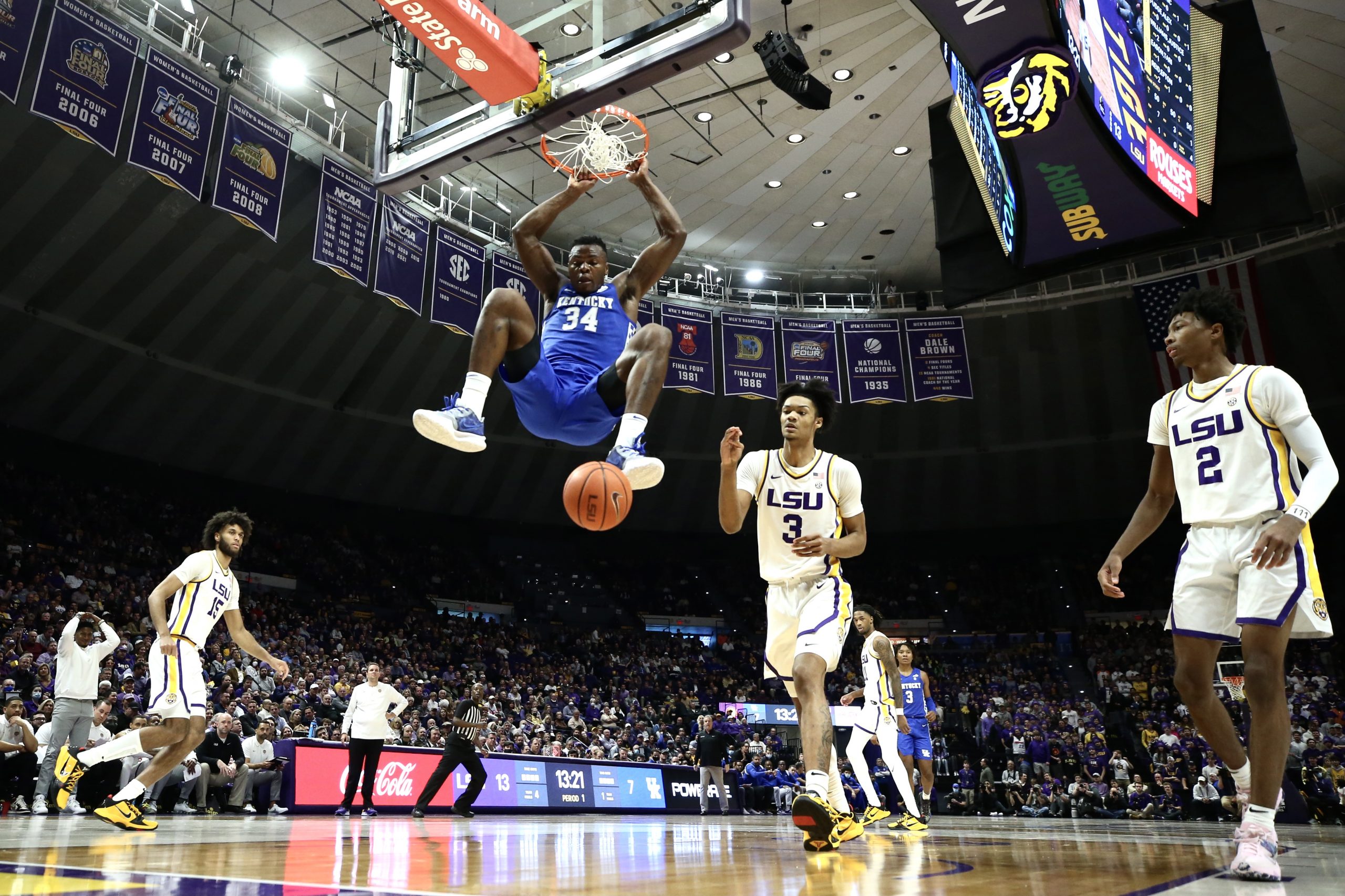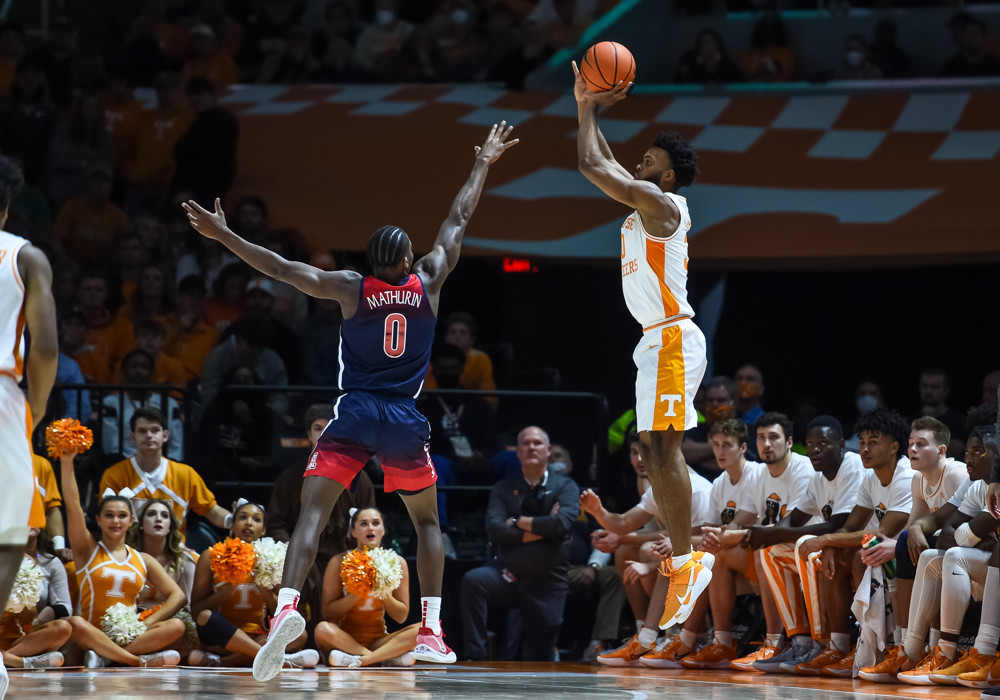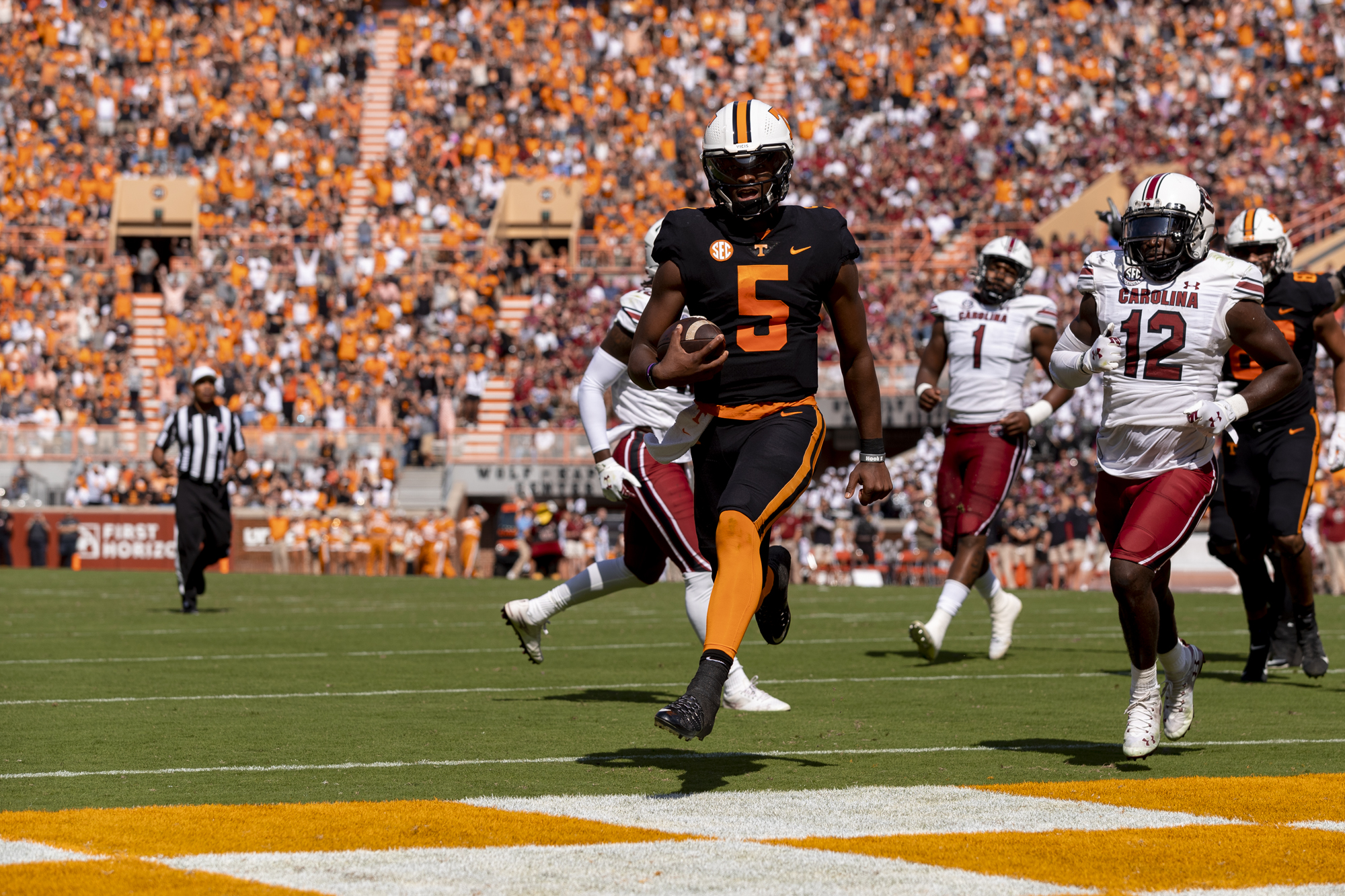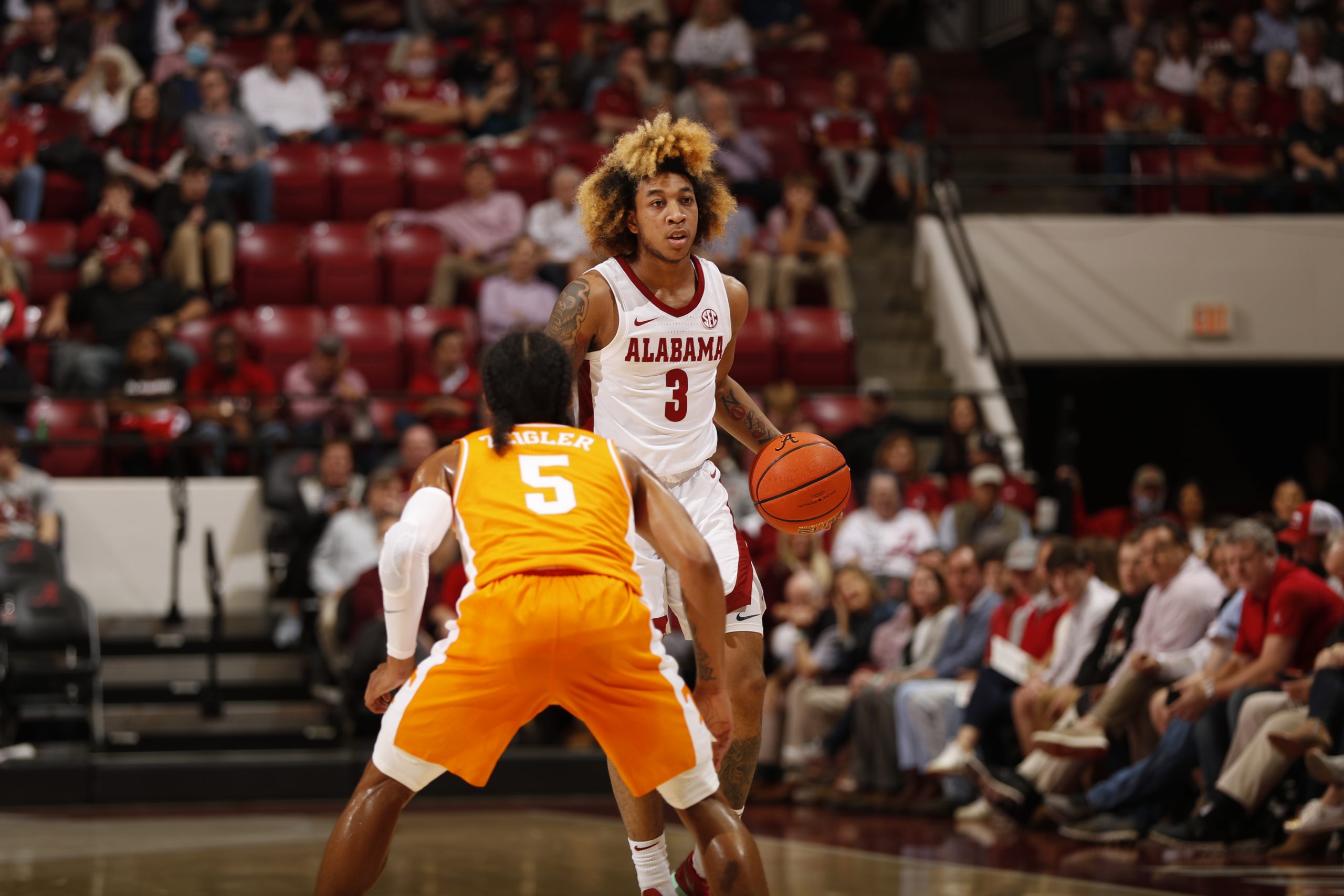Since getting blown out at Rupp Arena, the Vols are 4-1 and undefeated in SEC play. Each of those games had their moments of uncertainty in the second half, and each time Tennessee responded with a strong close. It’s what you want from your basketball team: playing their best ball not only at the end of the year, but the end of the game.
What’s so interesting about that to me is how many different looks the Vols have used to get that done.
Here are the crunch time lineups in Tennessee’s last five games:
- Vanderbilt: Zeigler, Vescovi, Powell, Fulky, Uros
- LSU: Chandler, Vescovi, Zeigler, Josiah, Uros
- Florida: Chandler, Vescovi, Zeigler, Josiah, Fulky
- Texas: Zeigler, Vescovi, Bailey, Josiah, Nkamhoua
- Texas A&M: Chandler, Vescovi, Zeigler, Josiah, Fulky
Santiago Vescovi has appeared in every close, to no surprise. Josiah Jordan James was injured at Vanderbilt and didn’t finish, but has closed all the others. Also appearing in every one of these: Zakai Zeigler.
I don’t read that as an indictment of Kennedy Chandler; the Texas group was on a 16-0 run, so yeah, you leave those guys in the game. To my recollection, Victor Bailey hasn’t been part of the crunch time lineup all year otherwise. But he was getting it done at Texas, so they rolled with him to the finish. Chandler struggled with five turnovers at Vanderbilt, but remains a key ingredient of what the Vols are doing throughout.
What looked like a novelty act against North Carolina has become part of Tennessee’s best basketball: three point guards on the floor at one time. Closing time has thus included Josiah at the four, and then the big most suited to the moment and the match-up. These Vols are versatile, and dangerous behind just that combination when you include Justin Powell, or Bailey’s work at Texas.
Last year, Tennessee’s uncertain lineups were one of their greatest weaknesses. This year, I think it’s a strength.
Tennessee’s Rotations 2019-2021
In 2021, with all its challenges, the Vols played a glorified seven-man rotation:
- 25-29 minutes per game: Vescovi, Pons, Josiah, Fulky, Springer, Keon, Bailey
Those seven guys, in multiple combinations, provided almost everything for the Vols last season. E.J. Anosike played double-digit minutes in Tennessee’s first eight games, but four or fewer in the last five. He’s currently averaging 17 and 8 at Cal State Fullerton. The Vols would give Nkamhoua some run for a couple of games, then he’d disappear back to the land of four minutes or less.
The starting group was deadly on defense and inconsistent on offense. But it was also incredibly thin: get Tennessee in foul trouble, and the Vols went to lineup wheel of fortune. In the NCAA Tournament, with no John Fulkerson and Yves Pons in foul trouble? This team was quickly finished, searching far and wide on the bench but finding no answer: Anosike, Nkamhoua, and Uros played a combined 20 minutes and scored one point.
In 2020, Lamonte Turner averaged 34 minutes per game before exiting in December. From there, it looked like this:
- 30-34 minutes per game: Bowden, Pons, Vescovi, Fulky, Josiah
- 16 minutes per game: Jalen Johnson
- 10-11 minutes per game: Gaines, Nkamhoua
The Vols asked an enormous amount from their starting five, including the newly-arrived Vescovi. Jordan Bowden played 34.4 minutes per game; only Josh Richardson under Donnie Tyndall (36.3) played more going all the way back through the Bruce Pearl era. The bench gave what they could, but you never felt like one of those guys was going to change the game. Davonte Gaines at George Mason, by the way, averages 11 points and 9 boards.
In 2019, Tennessee’s third-ranked KenPom offense looked like this:
- 31-33 minutes: Bone, Grant, Admiral, Lamonte
- 28 minutes: Bowden
- 24 minutes: Alexander
- 12 minutes: Fulky, Pons
Lamonte was sixth-man of the year in the SEC, but you know his crunch time work well. He essentially gave the Vols an excellent offense-defense closing group with Alexander, who ended up being the most valuable piece of Tennessee’s puzzle. He was injured in 2018 and missed the Loyola loss. And once he fouled out in overtime against Purdue in 2019, the Vols gave up a 6-0 run at the rim that essentially ended it.
But this group knew their roles and played them exceptionally well, an eight-man group with two-way versatility in crunch time.
However, I’m not sure we’ve seen anything like this mix in minutes:
Tennessee’s Current Rotation
- 30 minutes: Chandler, Vescovi
- 26 minutes: Josiah
- 20-22 minutes: Fulky, Nkamhoua, Zeigler
- 18 minutes: Powell
- 11-13 minutes: Uros, Bailey, Huntley-Hatfield
That’s ten guys.
You see the balance show up in the scoring column too. Vescovi averages 14 a night, Chandler 13.4. Then the next four guys – Nkamhoua, Zeigler, Fulky, and Josiah – average between 7.4 and 8.7 points per game. Chandler takes the most shots on the team, but he’s also 47th nationally in assist rate. As a team, the Vols are ninth in the country there.
Spot the defensive weakness. The three point guards are ferocious in creating turnovers, all three rating in the Top 100 nationally in steal percentage. Fulky (99th) and Nkamhoua (103rd) are right there in blocked shot percentage. And Josiah shows up in the Top 200 on both lists.
Meanwhile, Justin Powell is now shooting 42.1% from the arc. And Uros has given the team the necessary mindset at the start of the game, and will continue to be a factor down the stretch depending on the match-up.
Will the ten-man group get trimmed to eight or so? That probably depends on Bailey and BHH as much as anybody else. Can they provide a spark, as Bailey did at the close of the Texas game? Is Fulky healthy enough and Uros out of foul trouble enough to not need a few minutes from Huntley-Hatfield? These are the two guys you’re least likely to see in crunch time right now, but it doesn’t mean they won’t be in the rotation in March.
Since the PB&J squad, we’ve seen one Tennessee team that had to ask far too much from its starting five, and one that could go seven deep but got in incredibly rough water as soon as they needed an eighth. This Tennessee squad rolls ten deep, with eight you’d feel great about if the tournament started today. They haven’t closed with the same five in crunch time two games in a row in this stretch. But everything they’ve put on the floor in the last four minutes has worked. And you can see a tourney-friendly lineup emerge with three point guards, Josiah, and the best big available.
I think there’s a good chance the versatility we’re seeing from this team is much more of a strength than a weakness. Maybe they’ve got some blowouts in them between now and Kentucky’s return on February 15. But the next time we see them in crunch time, I’ll be curious to see if we get more of the same faces, or if the trust continues to be spread around.
Go Vols.

